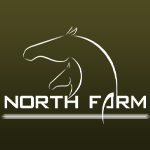Have you thought about your style lately? Part 1 of this series described some of the costs and benefits of conflict as well as a list of five different styles for dealing with it.
Part 2 is focused on providing helpful perspectives of emotionally responsive ways of dealing with “people” challenges within the horse industry. In other words, this article is about how you can take the “reins” of conflict.
I wouldn’t say that it is easy. Considering your conflict style and making improvement in how you deal with conflict requires self-reflection and awareness. And some people are as afraid of self-awareness as an untrained horse is afraid of a wildly flapping tarp. You want to run away. However, if you take the time, over-coming this will make you a more confident and effective person in many different situations.
To refresh your memory, the skill in conflict management is to be aware of the different styles, knowing your typical “go to style” and to challenge yourself to consider which approach betters suits a situation. Here are the five styles discussed in part 1.
1 – The old-school style is one of ‘power’ and characterised by “My way or the highway.” It uses “power” to resolve conflict, make decisions and is also called the dominating style.
2 – Then there is the avoiding style as known as “don’t rock the boat” approach. Here people withdraw from situations or events associated with the difficulties. It avoids or postpones the confrontation, little or nothing gets resolved and feelings get buried.
3 – An accommodating style allows the other person to get what they want, “I don’t care, do whatever you want”. Individual needs do not get addressed. It is unassertive, passive-aggressive and uncooperative.
4 – A compromising style is about splitting the difference, a more give and take approach, where both sides make concessions. It meets the needs for a harmonious relationship and is a middle of the road orientation.
5 – Collaborating style is about working together to find a solution. It is consultative and inclusive, assertive and cooperative. It means being committed to assessing the situation and addressing it before the conflict magnifies.
As I said previously, everyone has a conflict “style”, the style you most likely go to first when faced with a conflict. The personal development aspect is being aware of the other styles and being thoughtful towards the approach that would be most appropriate in a variety of different situations.
You might think, “When is the dominating style ever appropriate?” The dominating style is appropriate when there are established “parameters” as the leader role before decisions are made. It is also very appropriate when there is limited time to make a decision.
When you are in “higher” intensity moments, like 20 minutes before entering a class, it can be appropriate to listen to and follow the person who is calmest and most experienced in the situation. Often, coaches/ trainers have the most experience showing and training horse. However, for coaches and trainers who want to build a positive team environment and develop other leaders within their team, over-using a dominate style will eventually wear others down.
“Avoidance” is also a useful conflict resolution style, particularly when people need a cooling off period, and there is nothing to gain by resolving. Conflict raises the “heat” in people’s personality. If there is risk you will say something you might regret later, by all means exercise the discipline to wait. However, it is inappropriate when an important issue could escalate if you continue to avoid it. So, do you best to keep your cool, and aim to address an issue by effectively communicating your concerns.
The “Accommodating” style is important to build and preserve relationships. To elevate another person’s status, ideas or self-image, you need to recognize a person’s needs and wishes, and consider how they can be met in some way. For example a trainer has a select client, who expresses the need to get extra rest in order to feel like they can show at their best. The trainer accommodates the riders need by fitting in their warm-up during the day or early evening as opposed to one of the late night run-throughs. This is accommodated even if it would be the trainer preference to do it later. The client is left feeling respected and cared for.
Accommodation is not appropriate to use when smoothing over evades an issue. Same example, the select client is conflicted with the late warm-up times and feels this continues to negatively impact their showing experiences, this could result in deterioration in a relationship and lead to a break up.
“Compromise” is best used when you are better off with a compromise than risking a “win/lose” stance. This mean each side “gives”. Example, a client wants to show in a new class but the coach doesn’t think the horse or rider, are ready. Perhaps the compromise is to work out a plan to show in the extra class later in the show season. This is inappropriate when the solution becomes so watered down that commitment by both parties is doubtful.
“Collaborating” is best used when you have willingness and sufficient time to resolve issues. Perhaps there is conflict within a barn on the show schedule. Taking the time to discuss what options might work best for the group can be worth the effort in keeping people happy and feeling like a part of a team. This approach is inappropriate when you don’t have time or willingness to work through issues and consider other people’s needs.
In conclusion, all relationships have conflict and being better at relationships, means being aware of your own needs, and the needs of others. When needs are being met, motivation and relationships generally improve. This is good for everyone.










